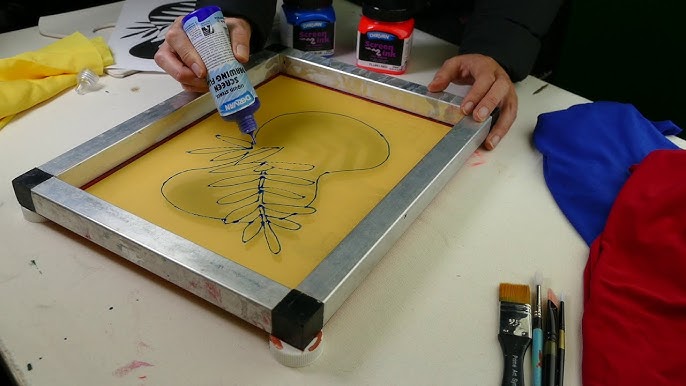ChatGPT said: What customers are saying in 10:9 Design reviews: real experiences
Wiki Article
The Necessary Guide to Comprehending Screen Printing and Its Versatile Utilizes
Screen printing has a rich background that dates back to ancient times, evolving into an advanced technique made use of throughout various industries today. This overview discovers the intricacies of the screen printing procedure, detailing its applications in home, advertising, and style design - 10:9 Design Screen Printing Texas. Recognizing these basics can open up imaginative potential for both artistic and business jobs. The adhering to areas will reveal crucial suggestions and methods to boost one's screen printing venturesThe History of Screen Printing
Screen printing has origins that trace back centuries, its development reflects the creative and technical advancements of numerous cultures. Coming from ancient China, the strategy was originally used for enhancing textiles and later spread to Japan, where it became indispensable to Ukiyo-e woodblock printing. The technique moved to Europe in the 18th century, where it gained appeal among artisans and business printers. The innovation of photo solution in the 20th century reinvented screen printing, allowing for even more detailed styles and better effectiveness. Artists like Andy Warhol better thrust its popularity, making use of the tool to create famous jobs that mixed commercialism and art. By the late 20th century, screen printing had established itself as a functional strategy, utilized in vogue, marketing, and art. Today, it continues to progress, integrating electronic modern technology and broadening its applications throughout various industries.The Screen Printing Process Explained
Screen printing changes creative visions into concrete styles through a collection of accurate actions. An image is produced and after that moved onto a screen, generally made of fine mesh material extended over a structure. A light-sensitive emulsion is put on the screen, which is subjected to light, setting in areas not covered by the image. After rinsing the unhardened solution, a pattern is developed.Next, the screen is put over the substratum, whether it be fabric, paper, or an additional product. Ink is after that pressed with the open areas of the stencil utilizing a squeegee, depositing the design onto the substrate below. This process can be repeated for several colors, calling for separate displays for every shade. Ultimately, the printed product is cured utilizing heat to guarantee the ink adheres properly, causing a long lasting, vibrant design all set for use.
Kinds Of Screen Printing Techniques

Additionally, specialty methods, such as discharge screen printing, eliminate color from the material to produce softer prints, while aluminum foil screen printing uses metallic aluminum foil to achieve a shiny coating (10:9 Design Company). Each strategy uses unique attributes, accommodating numerous imaginative demands and production ranges, ultimately increasing the opportunities within the screen printing domain
Applications of Screen Printing in Various Industries

Additionally, the signs and advertising fields make use of screen printing for developing eye-catching screens and banners. This approach permits vibrant colors and elaborate styles that record focus. In electronic devices, screen printing is employed for using conductive inks to circuit card, crucial for component connections. The home design market accepts screen printing to produce distinctive designs on textiles and wall art. Overall, screen printing serves as a crucial device across varied areas, improving products with individualized and aesthetically appealing graphics.
Tips for Successful Screen Printing Projects
While embarking on a screen printing project, cautious interest to information can substantially enhance the last outcome. Choosing high-grade materials is crucial; this consists of the screen, inks, and substratums. Using ideal mesh matters can affect ink deposition and detail resolution. Preparation is similarly crucial; comprehensive cleansing of screens and appropriate direct exposure times guarantee crisp prints.Next off, exact enrollment is important for multi-color prints. Using alignment tools can aid accomplish precise layering. Additionally, screening prints on scrap materials prior to production assists determine potential issues without wasting sources.

Often Asked Questions
What Products Are Ideal for Screen Printing on Material?
Cotton and polyester blends are ideal for screen printing on fabric as a result of their sturdiness and ink absorption. Additionally, specialized textiles like silk or canvas can produce special textures and finishes, improving the total design top quality.Exactly how Do I Tidy and Maintain Screen Printing Devices?
To preserve and cleanse screen printing equipment, one need to frequently clean screens with suitable solvents, inspect squeegees for wear, oil moving parts, and store all products in a completely dry, dust-free atmosphere to extend their life expectancy.What Are the Ecological Impacts of Screen Printing?
Screen printing can have significant ecological influences, including chemical waste from solvents and inks, water use during cleansing procedures, and power consumption. Environmentally friendly materials and lasting methods are necessary for lessening these negative results.Can Screen Printing Be Done at Home Effectively?
Screen printing can be properly done at home with the right materials and methods. Enthusiasts can develop high quality prints, though success relies on their ability level, tools, and understanding of the procedure involved.
What Are the Prices Connected With Starting a Display Printing Business?

Beginning a screen printing business entails costs for devices, materials, and work area. Preliminary expenditures generally range from a couple of hundred to numerous thousand dollars, depending on the range, top quality of machinery, and preferred manufacturing capacity.
Screen printing has a rich background that dates back to old times, advancing into an advanced technique used throughout numerous industries today. Another method, rotary screen printing, utilizes round displays, facilitating constant printing on material rolls, thus improving efficiency for large productions. Additionally, specialty strategies, such as discharge screen printing, eliminate color from the material to website create softer prints, while aluminum foil screen printing uses metallic foil to accomplish a shiny coating. In the fashion market, screen printing is extensively utilized to create vivid designs on garments, enabling brands to display their one-of-a-kind styles. Cotton and polyester blends are suitable for screen printing on material due to their longevity and ink absorption.
Report this wiki page